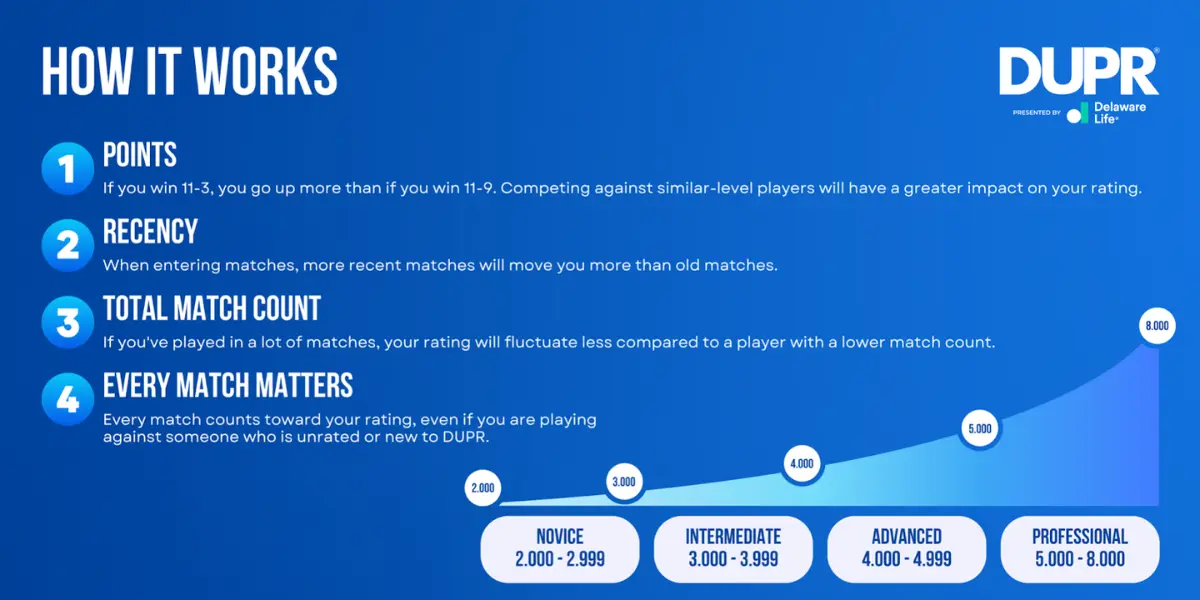If you’re planning to take pickleball seriously, whether for tournaments, leagues, or competitive matches, one of the first steps is understanding how to get rated and ranked in pickleball. Without a proper rating or ranking, it becomes difficult to track your progress, enter the right events, or play balanced matches.
Many players are unsure where they stand or how to begin building their official profile. This guide explains the exact process, from earning your first skill rating to moving up in competitive rankings. The steps are practical, based on experience, and easy to follow.
What Is a Pickleball Rating?
A pickleball rating is a number that represents your current skill level. It helps determine which players you should be matched with and what level of tournaments or leagues you can enter. Ratings typically range from 1.0 to 8.0 and are assigned based on your performance, consistency, shot selection, strategy, and understanding of the game.
There are several types of ratings used in the sport. Some players start with a self-assessment, while others earn an official rating by participating in organized matches or tournaments.
Understanding your rating is the first step toward playing smarter, improving faster, and competing more effectively.
Pickleball Rating Levels Explained (1.0 to 8.0)
Understanding where your skills fall on the pickleball rating scale is essential if you want to improve, compete, or play balanced games. Below is a breakdown of rating levels from beginner to pro, based on actual court behavior, shot consistency, and tactical awareness.
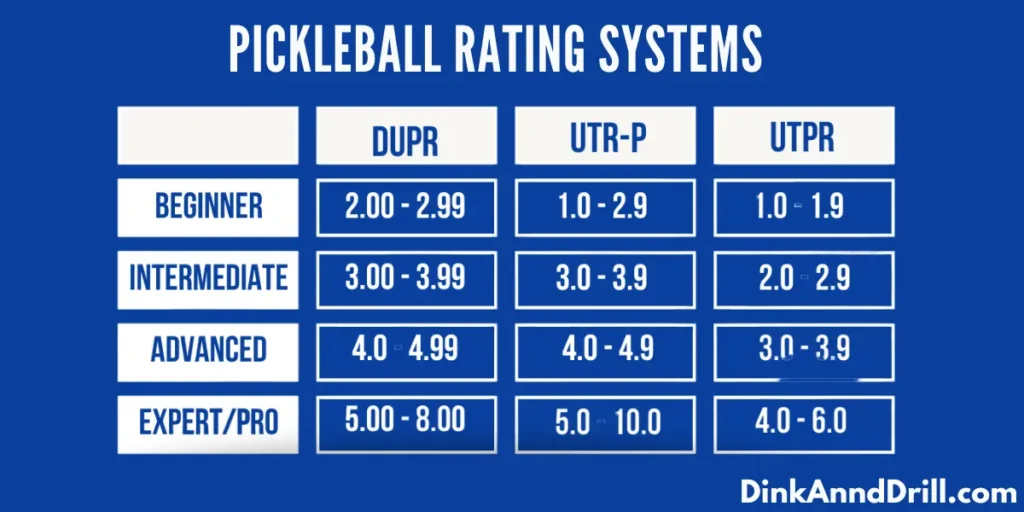
1.0 – Complete Beginner
You have never played pickleball before and have no foundational skills. You’re unfamiliar with rules, scoring, and court positioning.
2.0 – New Player with No Sports Background
You are just starting out and still learning the rules. Basic skills like serving or returning are difficult, and rallies rarely last more than one or two shots.
2.5 – Beginner with Some Experience
You’ve played a few games, can keep score, and sometimes sustain short rallies. You are beginning to develop basic serves and returns, but lack control and consistency.
3.0 – Lower Intermediate
You understand the fundamental rules and basic court positioning. Forehands and serves to show some consistency. You’ve started learning how to dink but can’t yet maintain a dink rally. You still avoid backhands when possible.
3.5 – Intermediate
You are improving in all key areas: forehands, returns, volleys, and third-shot drops. You can manage medium-length dink rallies and understand the concept of soft vs hard play. Your backhand is developing, but not yet reliable under pressure.
4.0 – Upper-Intermediate
You show patience in longer rallies and actively try to identify and exploit your opponent’s weaknesses. You switch between soft and hard shots effectively, play well at the net, and communicate with your partner. Unforced errors are still present but less frequent.
4.5 – Advanced
You have excellent forehand consistency and a well-developed serve with power and depth. You can change spins in pickleball and speeds, control dinks offensively, and cover the court efficiently. You’re confident at the non-volley zone and understand stacking and team strategy. Mistakes are minimal.
5.0 – Elite Competitor
You perform all shot types at a high level and rarely make unforced errors. Your tactical awareness is sharp, and you adapt your style mid-match with ease. You play in advanced tournaments and understand advanced strategy deeply.
5.5 to 6.0 – Semi-Professional
You consistently place well in top-tier amateur and semi-pro events. Your court movement, anticipation, and shot-making are elite. You can control the pace of the game and adjust your strategy to different opponents and formats.
6.5 to 8.0 – Professional Level
You compete at the highest levels, including national and international events. Your skills are complete in every area, technical, strategic, and mental. You read the game at a world-class level and rarely lose composure. Top players like Ben Johns fall into this category.
How to Get Rated in Pickleball
Self-Rating in Pickleball
Once you understand how the rating system works, the next step is to evaluate where you currently stand.
Most players begin with a self-rating, especially when joining local clubs or entering their first tournament. This involves honestly assessing your own skills based on widely accepted performance guidelines.
You can use official skill checklists provided by organizations like USA Pickleball to guide this process. These checklists break down each level into specific abilities such as consistency in serving, returning, dinking, and overall game awareness. Key areas to evaluate include:
- Serve and return accuracy
- Control during dinks and volleys
- Ability to execute a third-shot drop
- Footwork and positioning
- Understanding of doubles strategy and teamwork
Some players find it helpful to record their games and compare their play to the criteria listed for each rating level. While this rating isn’t official, it’s a useful way to place yourself appropriately in recreational matches or early competitions.
Official Pickleball Ratings
UTPR (USA Pickleball Tournament Player Rating)
UTPR is managed by USA Pickleball and is based on results from sanctioned tournaments. To receive a UTPR, you need to register with USA Pickleball and participate in official events.
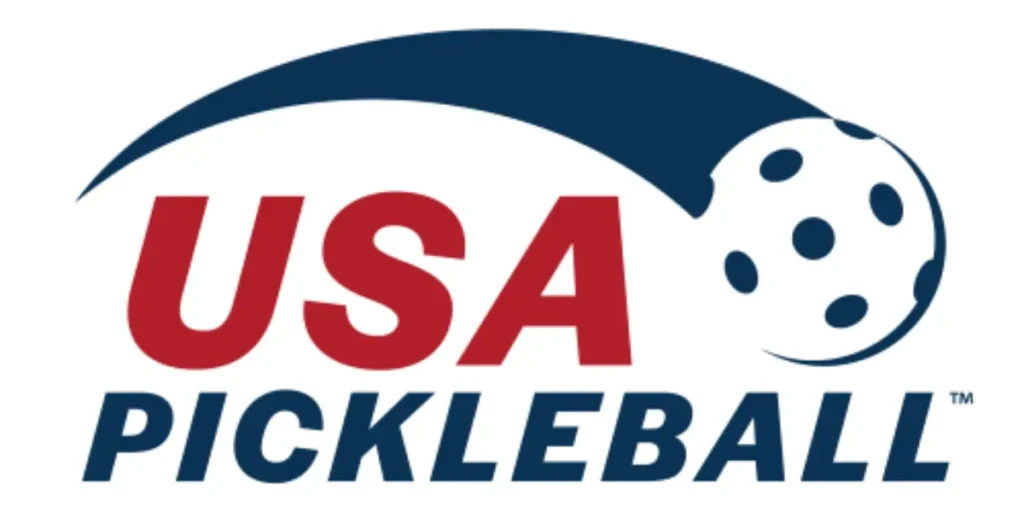
The rating is calculated from your match history, including wins, losses, the ratings of your opponents, and score margins.
It provides separate ratings for singles, doubles, and mixed doubles. UTPR updates periodically and is primarily used within official tournament circuits.
DUPR (Dynamic Universal Pickleball Rating)
DUPR is a more flexible system that includes both tournament and recreational play. You can create a free profile on MyDUPR.com and start submitting match results.
DUPR uses a dynamic algorithm that considers your match outcomes, the skill levels of your opponents, and whether the game was verified or unverified. It also tracks performance separately across singles, doubles, and mixed formats.
DUPR is growing quickly in popularity because it allows players to build a rating even without participating in formal tournaments. It updates more frequently and is widely accepted by clubs and recreational leagues.
Choosing between UTPR and DUPR depends on your goals. If you’re focused on official tournament play, UTPR is essential. If you prefer flexible and continuous feedback on your skill development, DUPR offers a more accessible option.
What Is a Pickleball Ranking?
A pickleball ranking shows where you stand compared to other players based on competitive results. Unlike a rating, which reflects your skill level, a ranking is earned by participating in tournaments and winning matches.
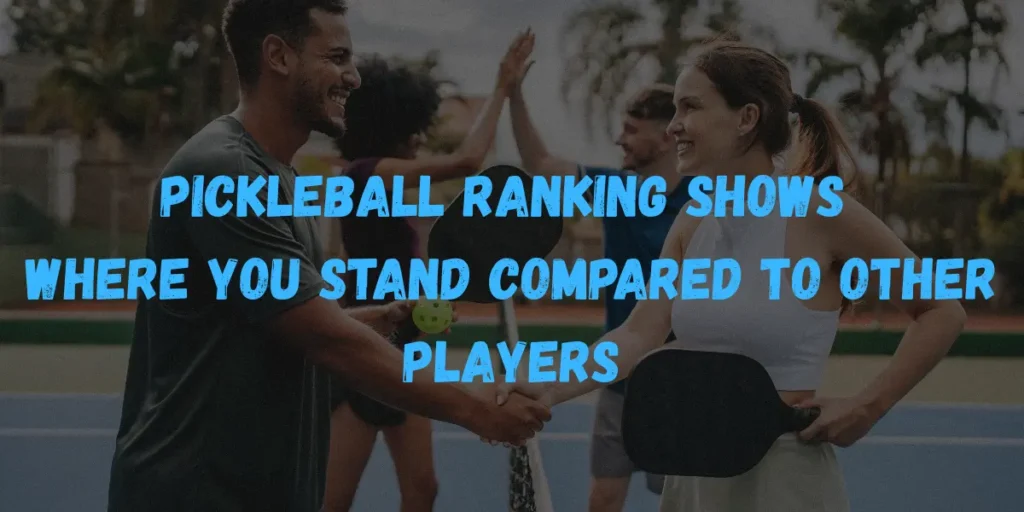
Rankings are often used in professional or high-level amateur circuits to determine placement on leaderboards, seedings in events, and eligibility for invitation-only competitions.
They are updated based on performance and points earned, making them a strong indicator of your success in competitive play.
How to Get Ranked in Pickleball
Play in Sanctioned Tournaments
One of the most effective ways to earn a ranking is by playing in USA Pickleball-sanctioned tournaments. These events use an official point system where each match affects your standing. The more you compete and win, especially against ranked opponents, the more your position improves. Consistency and participation are essential if you want to climb national leaderboards.
Join a Pro or Semi-Pro Circuit
For advanced players aiming to break into competitive scenes, circuits like the PPA (Professional Pickleball Association) and APP (Association of Pickleball Professionals) track player rankings through accumulated points.
These points are earned based on your performance in tour-level events. Rankings here are more public and often tied to sponsorships, invitations, and prize opportunities.
Participate in Local Leagues and Ladders
Even if you’re not competing nationally, many clubs, academies, and recreational centers run their own ranking ladders and league systems. These allow players to gain experience in a competitive setting while tracking progress locally.
It’s a great way to sharpen your game, gain exposure, and prepare for higher-level events while still earning recognition within your region.
Tips to Improve Both Rating and Ranking
Improving your rating and ranking in pickleball requires more than just playing frequently. It involves intentional practice, smart match play, and constant learning. Whether you’re trying to move from a 3.0 to a 3.5 rating or climb a tournament leaderboard, small improvements in key areas can make a big difference.
Start by focusing on consistency. Work on reducing unforced errors and improving shot reliability, especially in serves, returns, dinks, and third-shot drops. These are the foundations of higher-level play.
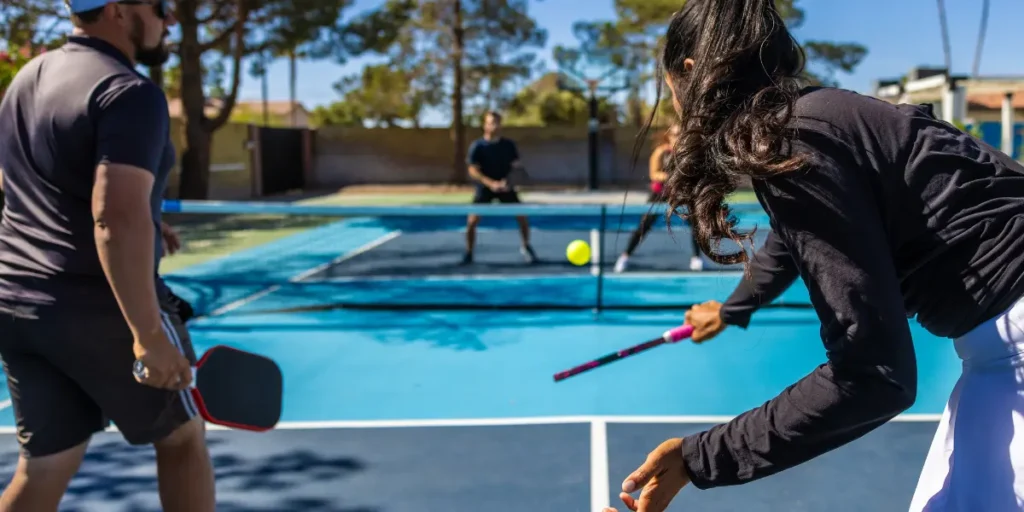
Play with stronger opponents whenever possible. This not only challenges you but also helps you adjust to faster-paced games and advanced strategies. Win or lose, these experiences elevate your skill level.
Record your matches and review them to identify patterns in your play. You’ll notice habits, strengths, and weaknesses that may not be obvious in the moment.
Consider taking a few lessons or clinics from a certified coach. Even a single session can help you correct technical flaws or better understand game strategy, which reflects directly in both your rating and performance.
Lastly, compete regularly, but with purpose. Each match you play should be seen as a learning opportunity. The more you play under pressure, the more comfortable and confident you become on the court, which helps both your rating and ranking improve over time.
FAQs
It depends on how often you play and the types of matches you participate in. With DUPR, you can get a rating after just a few logged games. For UTPR or rankings, it may take several tournaments.
Yes. DUPR allows you to build a rating using recreational matches, as long as they are submitted properly. UTPR, however, requires participation in sanctioned events.
Yes. If your performance declines or you lose matches consistently, both your rating and ranking can decrease over time. That’s why ongoing improvement and match preparation are important.
Conclusion
Understanding how to get rated and ranked in pickleball is essential for anyone looking to improve, compete, or take their game more seriously. A proper rating helps you play balanced matches, while a ranking highlights your competitive success.
Starting with self-assessment and progressing through systems like DUPR or UTPR gives you structure and direction.
Whether you’re aiming for local tournaments or professional play, the path begins with knowing where you stand and how to move forward with purpose.

